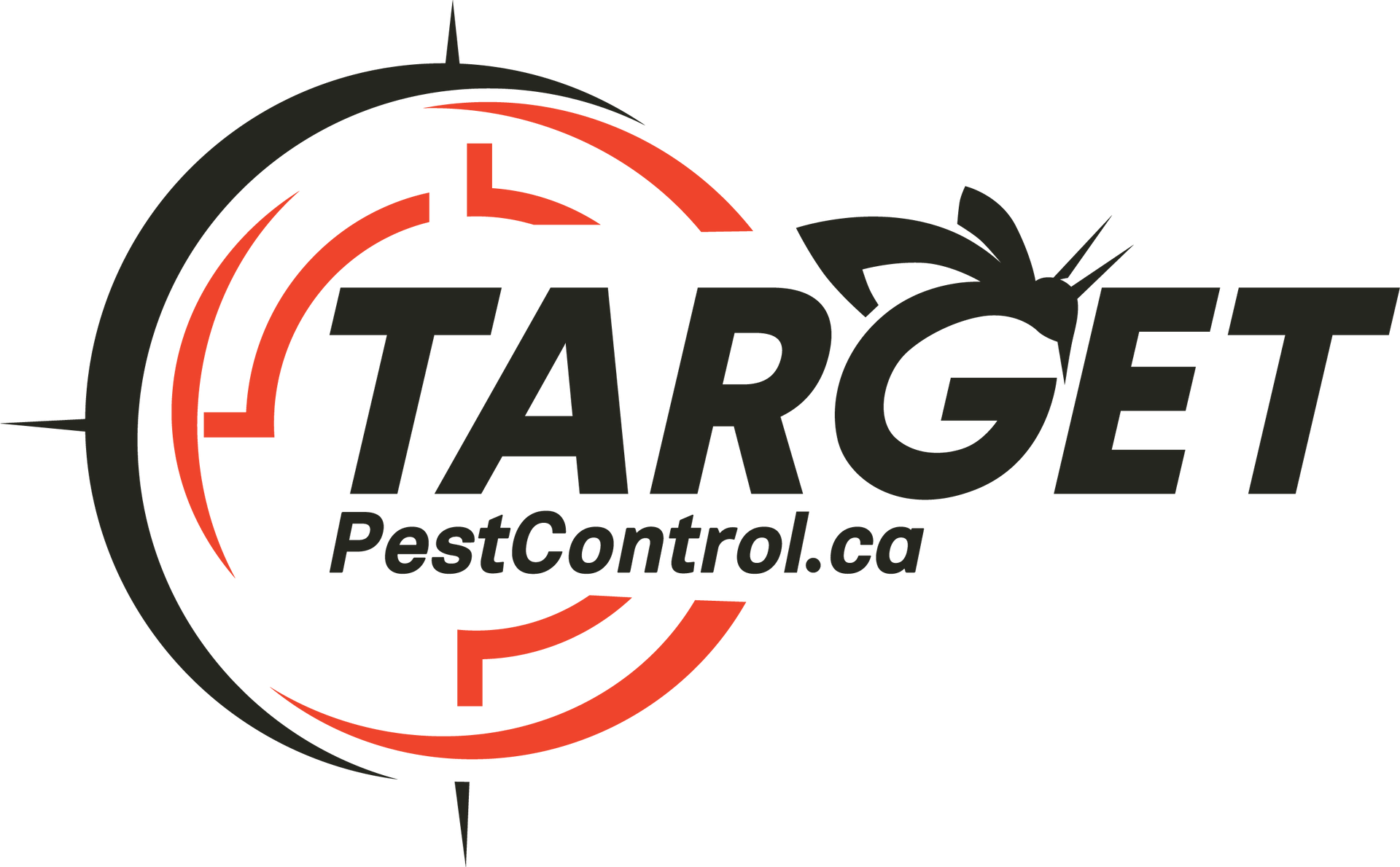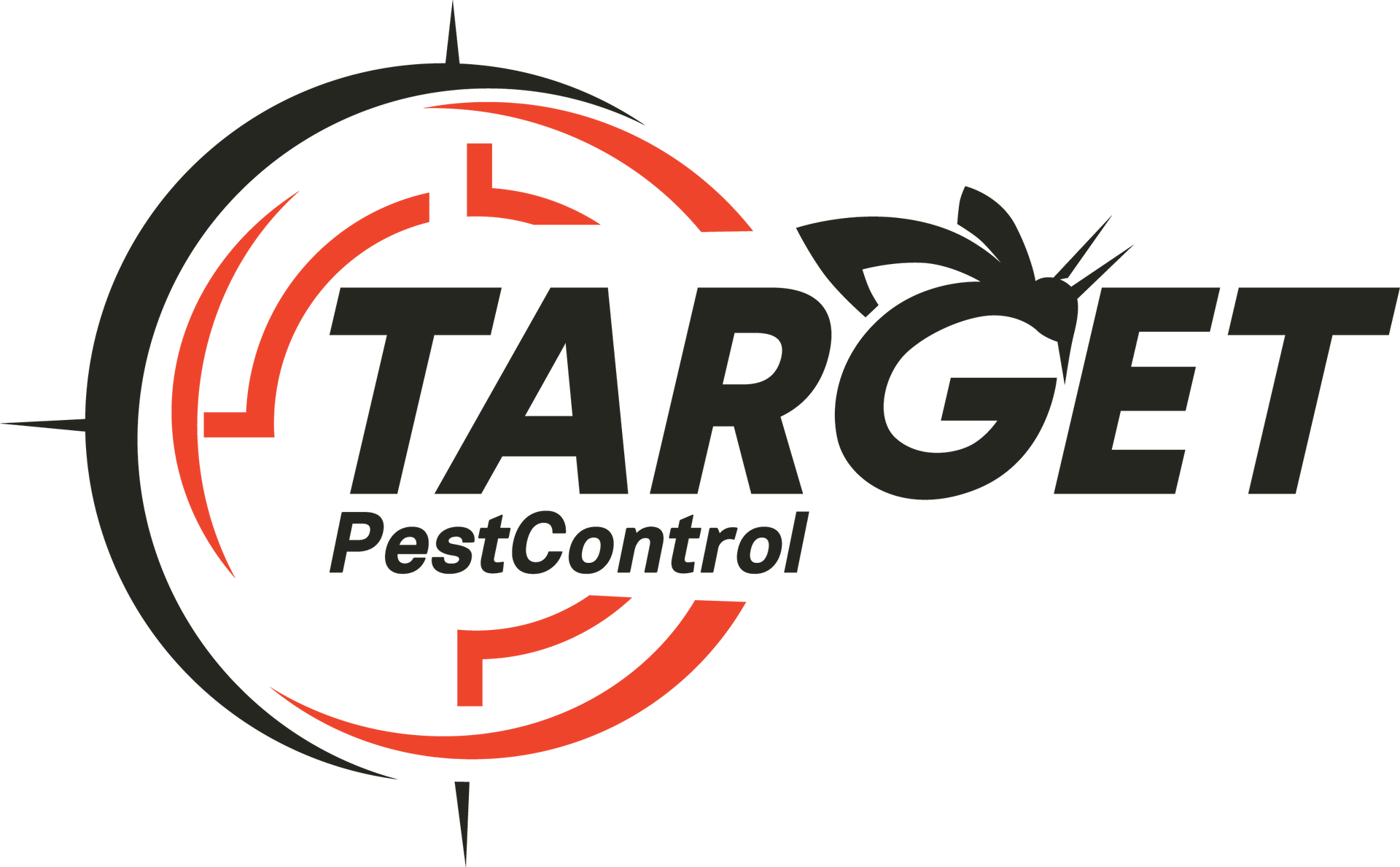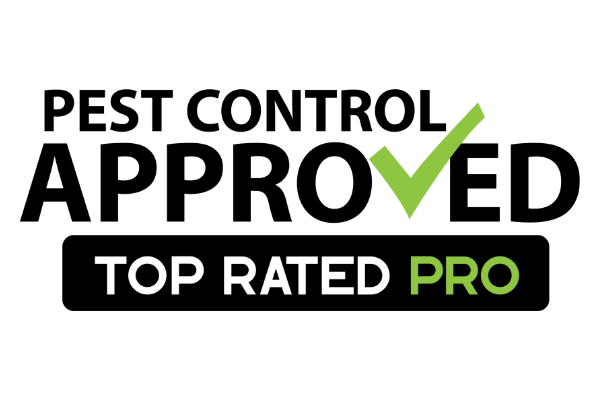My name is John Target, owner and operator of Target Pest Control. We are located in Calgary, Alberta and I have over 18 years of experience in the industry.
Get In Touch!
Phone Number:
Email Us:
Phone Number:
Send An Email:
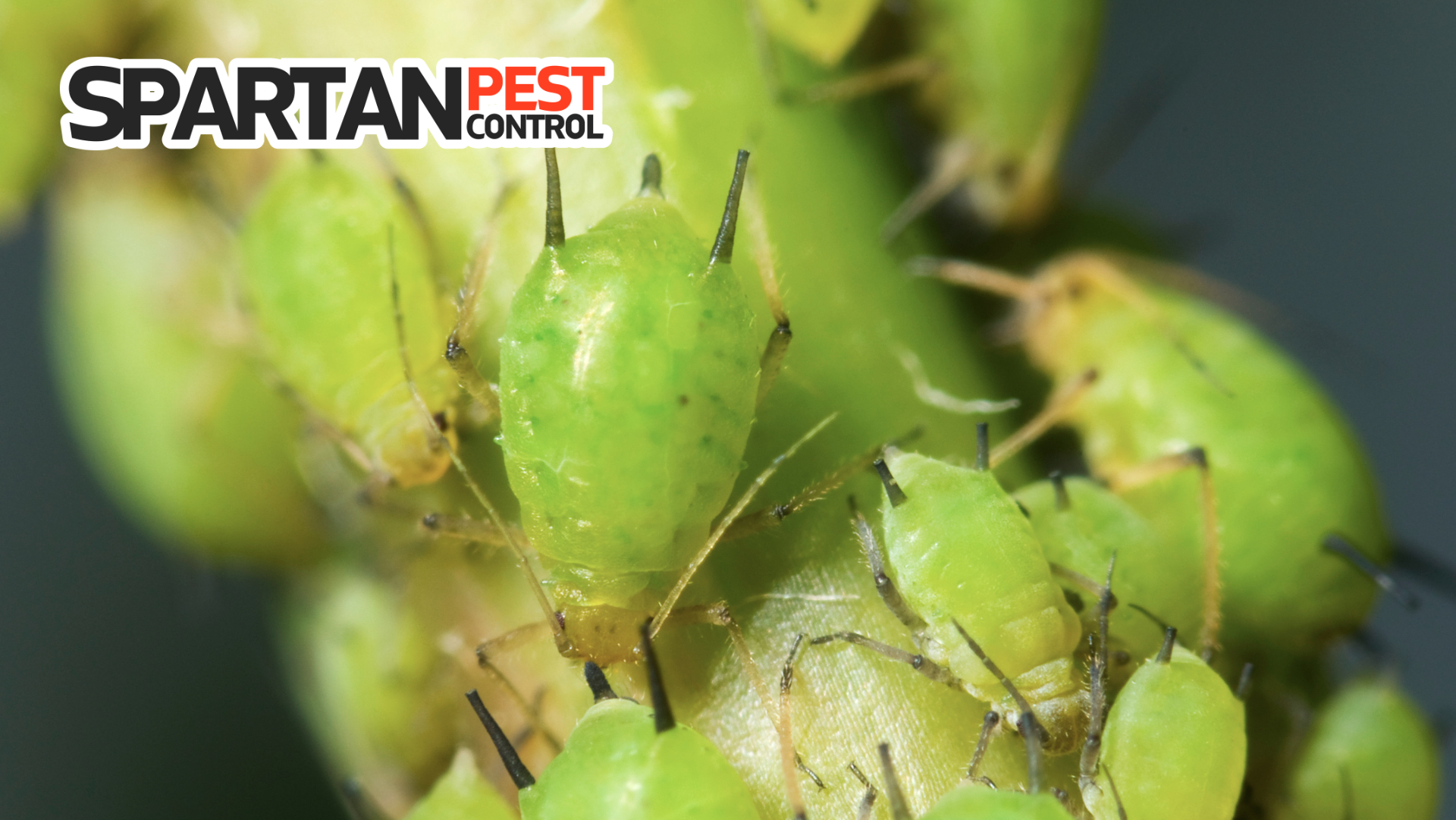
What Are Aphids?
Aphids are tiny insects that breed rapidly and can harm plants and crops in Alberta. There are over 4,000 species of aphid in the Aphidoidaea family. Aphids originated 280 million years ago from an unknown location and are also known as plant lice, green flies, and ant cows. They breed rapidly but cause little danger to humans. However, they can devastate crops. Treating Aphids early is key to protecting vegetation.
Not all pest control companies offer Aphid treatments. In most cases, Aphids can be managed by using insecticidal soap or DIY methods if applied correctly. You can also contact a local arborist who will inspect the infected tree or crop and create an action plan to help eliminate the infestation.
What Do Aphids Look Like?
Aphids are small, often wingless insects. They have soft bodies with small heads and round abdomens. They are between 1.5 and 3.1 mm long and can be different colors depending on the species; such as black, green, white, orange, or bluish-green. In Alberta, they are usually green or black.
Their small heads have compound eyes, and a tube-like tongue called a proboscis. Each leg has a pincher-like claw at the end. Their abdomen, at the end of their body, contains all their vital organs. In aphids, the thorax and abdomen appear as one unit. Although most aphids are wingless, occasional winged females appear. Winged aphids are produced when a plant becomes too crowded. These females will fly to a new plant and infest it.
Their mouths are called stylettes which are hard piercing mouthpieces. They are used to break the skin of a plant so they can suck out the sap. Aphids are usually wingless although females may grow wings when they need to find a new habitat. They have two legs near their heads and two pairs of legs on their thorax.
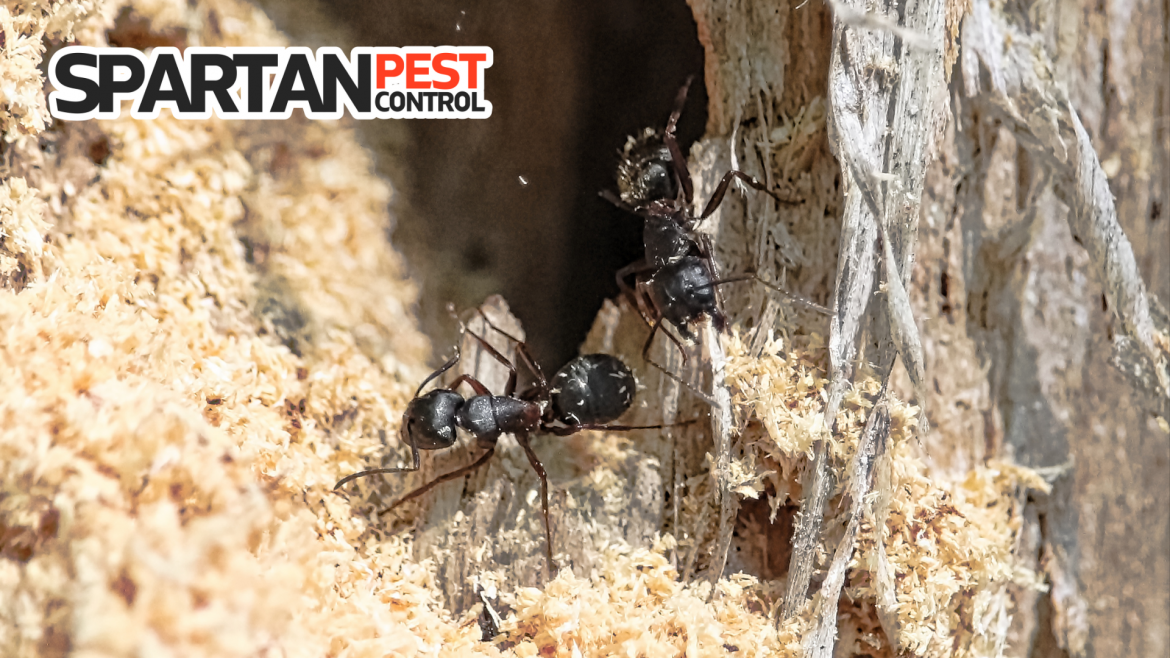
What are the Signs of a Infestation?
Carpenter ants may not leave many signs, especially if they do not have a primary nest indoors. However, they can create small piles of wood shavings near their nests. These shavings are commonly found near baseboards, windowsills, in attics, or under dishwashers. Damage done by Carpenter ants is similar to termite damage. But carpenter ants do not consume the wood; they hollow out soft wood for nests. This hollowing process creates thin curving lines in wood. Unfortunately, this is often hidden behind walls or underneath furniture.
Rustling or scratching noises may also be heard, especially at night as the ants carve pathways in wood. Shed wings or ant exoskeletons can be found when infestations are more severe. The most obvious sign of an infestation is seeing ants. Winged ants are a sign that ants are searching for a new nest; workers are a sign that a nest is already established.
- Frass (wood shavings)
- Scratching sounds in wall or ceiling
- Shed wings & exoskeletons
- Damage to wood structure
- Seeing a Carpenter Ant
If you see a Carpenter ant, follow it around for a few minutes as it may lead you to a nest nearby. When a nest is located, get a treatment done as soon as possible as the damage these pests can cause can costs thousands of dollars.

Do Carpenter Ants Cause Problems?
The primary cause of a Carpenter ant infestation is poor sanitation. Food spills, crumbs, and unsecured food will draw ants into your home. Once they enter a home, they will leave a scent trail and possibly create a nest. Ants use pheromones to mark routes to food and nests and will routinely follow the same paths to a stable food source. Even if they do not build a nest indoors, they will likely continue entering to eat. Cleaning up spills and frequent sweeping will help prevent ant infestations.
A secondary cause of infestations is poorly sealed windows and doors. Cracks in the foundation, around windows, or in attics will allow ants easy access to your home. Softened wood will also attract them. Fixing any leaks around appliances, eavestroughs, and porches will help deter ants.
Ants can also carry bacteria. They pick up bacteria as they travel across the floors and will leave it behind on any surface they walk on. They often carry E. Coli and Salmonella onto tables and counters. A thorough cleaning with a bleach-based product can eliminate these bacteria.
Carpenter ant bites are not poisonous, but they can be painful. They have large jaws, and they spray formulaic acid. The acid makes the bites itchy and red. The bite marks are the size of a pea and may burn. Although painful, the bite has no venom and does not transmit any disease. Clean the bite with warm water and soap. Antibiotic ointment can be applied as needed. It’s recommended to contact a local physician if the bitten area continued to cause pain after 24 hours.
Thanks Spartan Pest Control for treating my mothers house for Carpenter Ants. Based on the damage the ants caused we are very happy they are gone.
Janet Greene – Customer Review (Calgary, AB)
Carpenter Ant Treatments
There are two main options for treatment: DIY home treatments or hiring a trained exterminator. Professionals have access to a wider range of products and know how to safely apply them. If you are concerned about the extent of the infestation, have kids, pets, or allergies, a professional is the safe choice and often the right one due to the complex nature of Carpenter Ants. If using over the counter products or home remedies, you can end up pushing the colony to a near by location instead of eliminating them.
Treatment usually involves a combination of insecticides. Bait granules should be placed near food sources where ants have been seen. The goal is for the workers to carry the bait to the queen. If the inside nest is a satellite nest, outdoor baiting or spraying may be necessary. A homemade solution of boric acid and honey or sugar is a classic home remedy however due to the size of Carpenter ants almost never effective. Also, boric acid is poisonous to pets and children and should be used with caution.
A professional inspection is recommended for Carpenter ants. A Trained pest control professional can correctly identify the ant species and treat it accordingly. Treatment may involve a combination of spraying, baiting, and sources all nest locations. An insecticide may be sprayed around the outside of windows, doors, and eaves to kill any ants. Bait stations may also be placed inside and outside. A foam or dust can be used in attics to kill ants inside voids or crack and crevasses. It is important to have attics and any indoor spaces inspected for structural damage.
Further preventative measures include fixing leaks that cause moisture rich environments and sealing windows and doors. Trees that hang over the roof should also be trimmed back. The best way to treat a nest is to locate it and apply commercial grade pesticides directly inside. For more information on controlling Carpenter ants, check out our ant control services page for details.
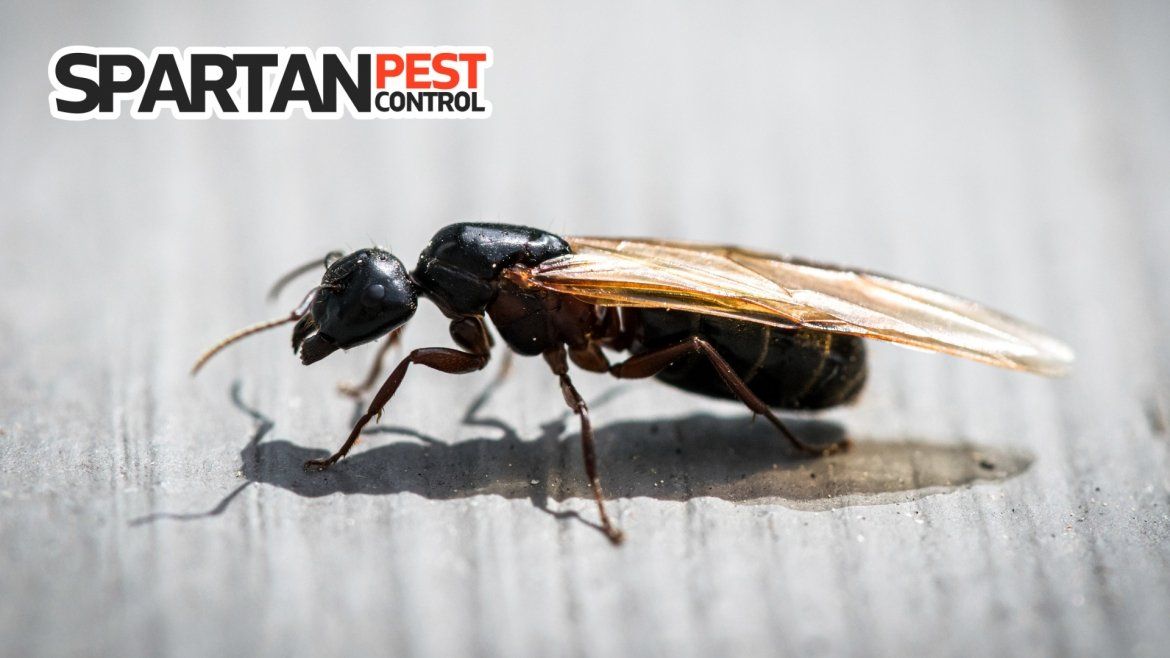
10 Facts About Carpenter Ants
1) Carpenter ants don't have lungs
They breathe through holes on the sides of their bodies called spiracles. These holes connect to tubes throughout their bodies. Carbon dioxide is released through these same tubes.
2) Carpenter ants are tidy
Carpenter ants routinely clean their nests and tunnels. They carry dead ants out of their nests and even use man-made resins to scrub the tunnels.
3) Carpenter ants have amazing strength
They can lift up to 50x their body weight. Most of this weight can be carried by their mandibles.
4) Carpenter ants can spray formic acid
Although they lack venom, Carpenter ants can spray formic acid into bites. Formic acid burns and makes the bites painful.
5) Carpenter ants have poor vision
They rarely use their eyes. Instead, they rely on pheromone trails to find their nests and food. They even have pheromones alert other ants to danger.
6) Carpenter ants are massive
They are the largest ant in North America. The queen is around 20 mm while the workers are between 6.5 and 13 mm. Other species are often only 1 to 2 mm.
7) Carpenter ants are communal
They live in colonies with thousands of workers and their roles are determined by what type of ant they are: worker, queen, or male. All ants work together for the good of the colony.
8) Carpenter ants are dormant in winter
Unless living in a warm environment like a house, they hibernate in winter. They burrow into the ground in cold climates like Alberta. They enter a true hibernation where they don’t eat for months.
9) Carpenter ants don't eat wood
Instead, they dig tunnels and nests in the wood. Excess wood is discarded outside of the tunnels.
10) Most Carpenter ants are female
Almost all Carpenter ants are female except for the winged males. Their job is to fertilize the queen. After fertilization, they die off.
About Author
John Target - Owner & Operator
My name is John, owner of Target Pest Control. We are now located in Calgary, Alberta and have been providing pest control solutions on the east coast since 2008. I have over 18 years experience in the industry and enjoy the everyday problem solving this industry offers.
You May Also Like

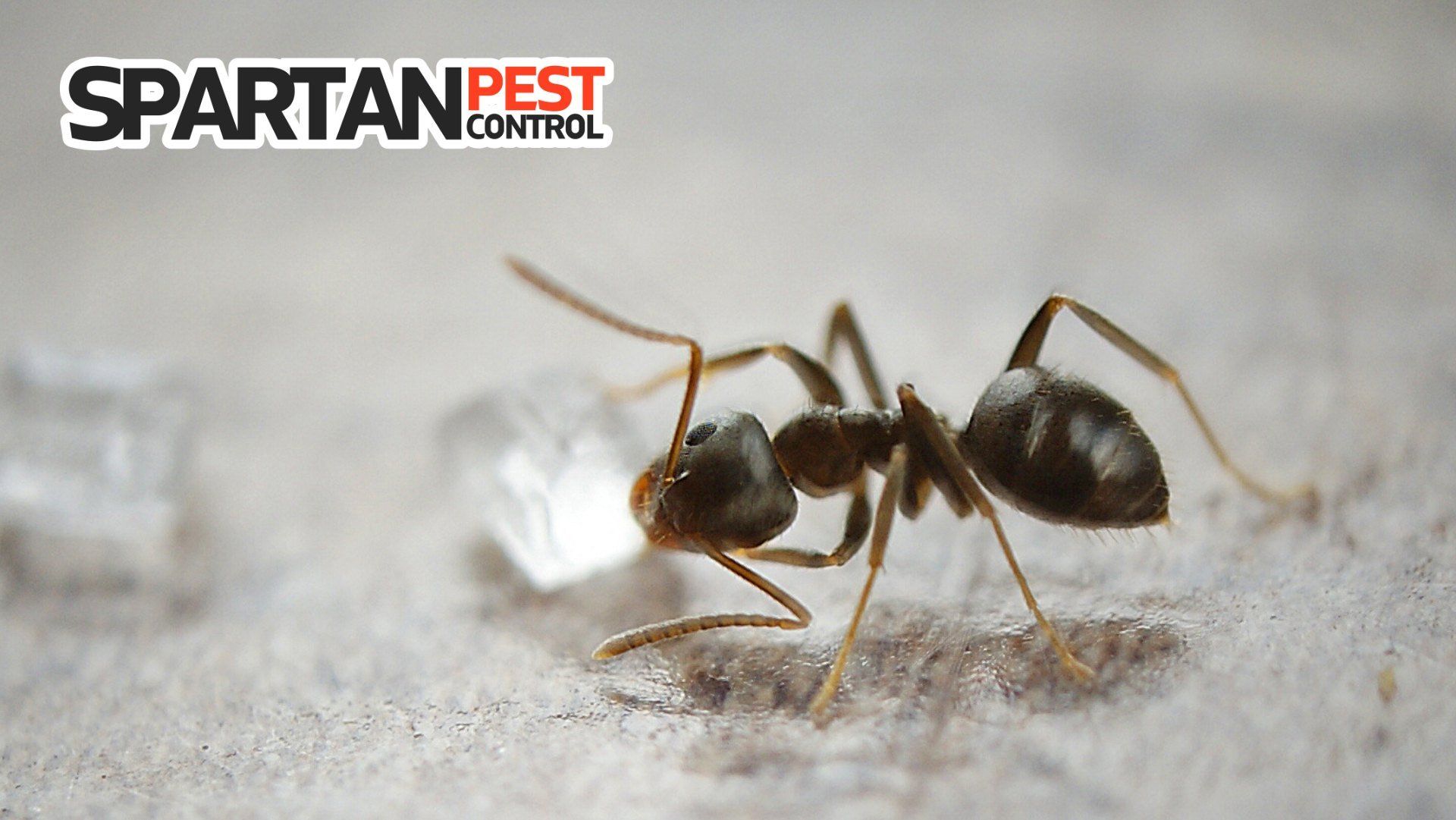
AUTHOR

RECENT POSTS


© Copyright 2024 | All Rights Reserved | Web Design & SEO by Purple Penguin Media
